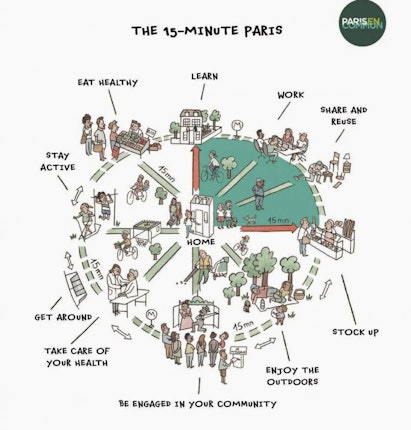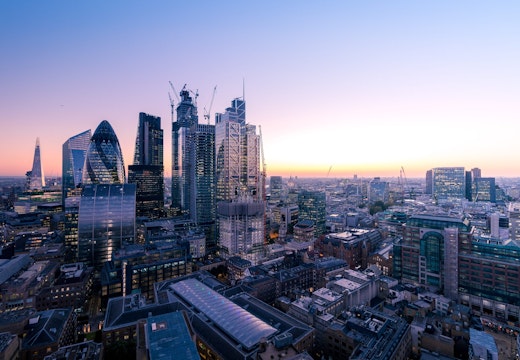How the 15-minute city can escape from the conspiracy theorists
Compact, walkable neighbourhoods can be great places to live and work – but research suggests the 15-minute city is not easy to define. Can this urban concept avoid being labelled as a threat to liberty?
Those of us who are urban dwellers clearly have much to gain from the model of the ‘15-minute city’. Research suggests we can more easily pop out to the shops, find fresh food or access health services on our doorstep. There are more local opportunities to learn and to find work – and less exposure to traffic and pollution.
So it stands to reasons that we also have much to lose from the conspiracy theories currently swirling around a planning concept originally designed simply to create more sustainable and human-centred urban neighbourhoods, but now repositioned in the UK by libertarians as a shadowy threat to personal freedom.
A form of urban imprisonment?
The ‘15-minute city’ concept originated with French-Columbian scientist Carlos Moreno at the Sorbonne and was taken up by Paris mayor Anne Hidalgo along with a host of other cities including Buenos Aires, Barcelona and Melbourne.
The idea at its core seemed innocuous enough: it is that the essential services that citizens require should be readily accessible within a 15-minute walk or cycle from their home. However, this has recently been twisted into a form of urban imprisonment that curtails an individual’s movements.

Image: courtesy of Paris en Commun
British experts in the field struggle to explain how this twist has occurred. At the WORKTECH London conference in November 2023, Edwin Heathcote, architecture and design critic of the Financial Times, whom I interviewed onstage, attributed such a bizarre transition to ‘culture wars’ devised to open up new battle lines between the main political parties in the UK around reaching net zero and the rights of the motorist.
In other words, the 15-minute city has become a wedge issue and all those who might enjoy its benefits are casualties of more than the truth.
A more complex concept
But look behind the headlines of the controversy and the concept is perhaps more complex and difficult to define than might first appear. At the 2023 Healthy City Design international congress, held this year in Liverpool’s impressive Knowledge Quarter, itself working to a 15-minute radius, Camilla Siggaard Andersen of the architectural firm Hassell presented survey research showing how the model means different things to different people, who are also walking at different paces. After all, a millennial employee generally marches around at a different pace to a pensioner.
Definitions of the 15-minute city ranged from ‘a compact place’ for compact communities (11 per cent) and an amenity-rich ‘place with multiple functions’ (38 per cent) to ‘a place that is walkable’ with sustainable access (60 per cent). More than 5,000 people were surveyed. Hassell’s study ventured its own definition of the 15-minute neighbourhood as ‘made by bringing people closer together in walkable, amenity-rich environments’.
A more nuanced approach
This useful statement was reinforced by fellow presenter Elad Eisenstein of infrastructure firm AECOM, who bemoaned the reduction of the concept to new cycle lanes and traffic calming measures, and used a series of design studies in Stratford, east London, to explore a richer, more nuanced approach.
Planners needed to synchronise several factors, including urban density, climate change, mobility, network, nature and heritage, to create flourishing 15-minute cities of the future, said Eisenstein, quoting Aristotle’s famous phrase ‘A good city exists for the sake of a good life – not for the sake of life only’.
That’s not a bad slogan on which to base a campaign to reclaim the 15-minute city as a potent tool for healthier living and working – and steer it away from being weaponised for political gain by those who dismiss it as infringement of personal liberty.
‘Get it right in practice and the conspiracy theorists could conceivably go into retreat…’
Whatever happens next will depend on the expertise of urban planners and designers to make these urban quarters really thrive as meaningful places for those who live and work in them.
As the Central Business District for the commuter class struggles to recover, mixed use and mixed experience developments are set to thrive. The compact frame and walkable ethos of the 15-minute city are clearly important in this context, but a lot will come down to the way the model is defined and implemented on the ground. Get it right in practice and the conspiracy theorists could conceivably go into retreat.








